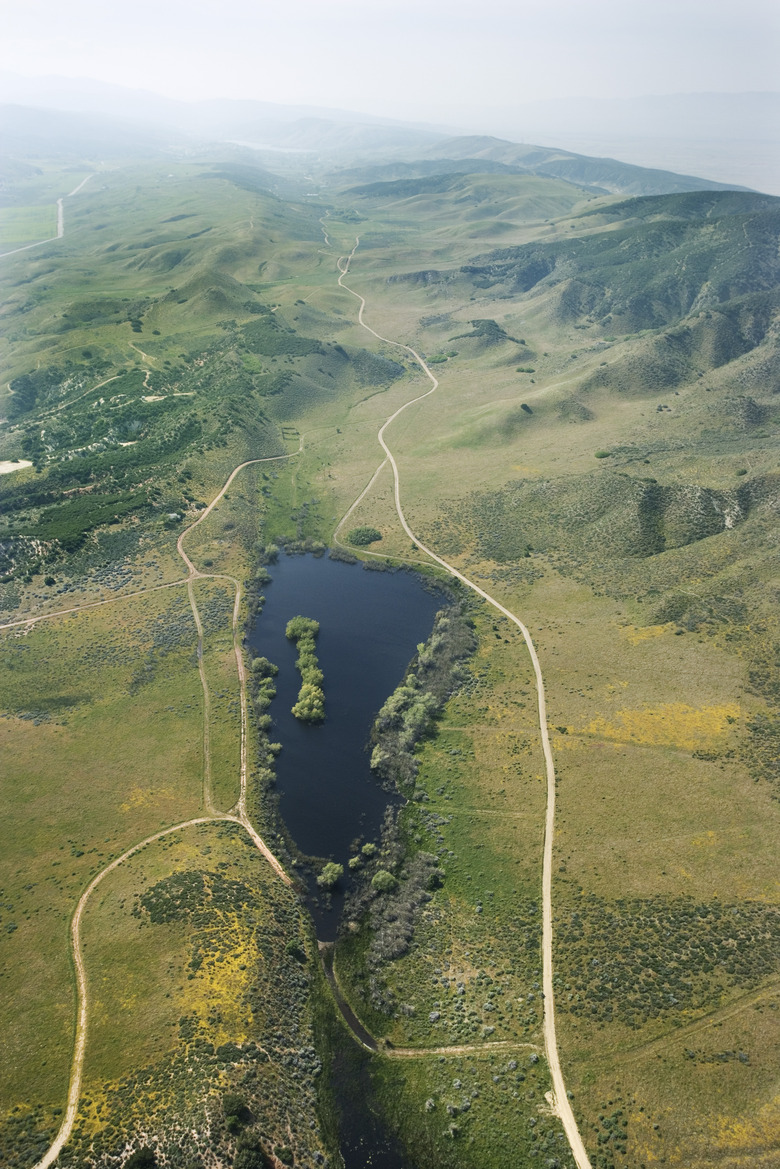The Geology Of The Earth's Internal Processes
Internal processes within the Earth create a dynamic system that links the three major geologic sections of the Earth — the core, the mantle and the crust. Huge amounts of energy, conserved and created near the center of the Earth, are transferred by internal processes to other parts of the globe where they become the forces that create mountain chains, volcanoes and earthquakes.
The Core
The Core
The Earth's core extends from about 2,900 kilometers (1,810 miles) from below its surface to its center, about 6,400 kilometers (4,000 miles) from the surface. The core produces heat by radioactive decay of the elements inside it. It has also conserved heat produced during the formation of the planet billions of years ago. This heat is the also the source of the energy that drives processes in the mantle and the crust. The flowing liquid iron in the outer core produces a geomagnetic field that extends far into interplanetary space. This field deflects the solar wind away from the Earth, thus protecting us from that harmful radiation.
The Mantle
The Mantle
The mantle is the shell of the Earth positioned between the core and the crust, with its upper surface at a depth of 7 to 40 kilometers (4 to 24 miles) below the surface. The heating of the mantle by the underlying core forms giant continent-sized convection cells in its viscous material. These convection cells bring the hotter bottom material to the mantle-crust interface, while the cooler material from the top of the mantle flows downward.
The Crust
The Crust
The upper horizontal portions of the convection cells in the mantle circulate like giant conveyor belts, dragging with them large portions of the crust and the uppermost parts of the mantle in direct contact with them. These parts of the combined crust and uppermost mantle are known as continental plates and they move a few inches a year. The interaction of the plates is called "plate tectonics." There are a few dozen plates, the larger ones being the size of continents.
Plate Tectonics
Plate Tectonics
As the plates move, they inevitably come in contact with each other. When plates collide, the crust buckles into mountain ranges; the Himalayas are the result of the Indian Plate running into the Eurasian Plate to the north. Mountains and volcanoes are also formed along the line where a plate dives under another and lifts it up. Where two plates are moving away from each other, deep trenches are formed with mountains and volcanoes dotted along the seam. When plates move past each other along a boundary, they form faults, which occasionally produce major earthquakes; the San Andreas Fault in California is an example.
Cite This Article
MLA
Soonawala, Nash. "The Geology Of The Earth's Internal Processes" sciencing.com, https://www.sciencing.com/geology-earths-internal-processes-3201/. 24 April 2017.
APA
Soonawala, Nash. (2017, April 24). The Geology Of The Earth's Internal Processes. sciencing.com. Retrieved from https://www.sciencing.com/geology-earths-internal-processes-3201/
Chicago
Soonawala, Nash. The Geology Of The Earth's Internal Processes last modified August 30, 2022. https://www.sciencing.com/geology-earths-internal-processes-3201/
